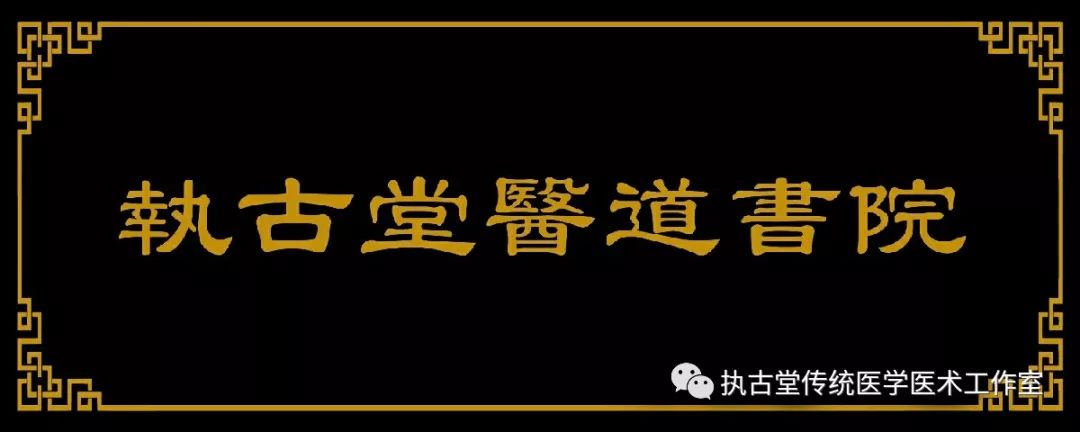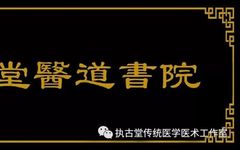
Editor’s Note: When Yang is excessive, it leads to heat, which injures Qi, and Qi injury causes pain. Today, we will discuss the last of the six external pathogenic factors, the heat pathogen. The heat pathogen mainly arises from two aspects: first, external pathogens, with the most discussed in TCM being the warm pathogen or warm heat pathogen, also known as fire pathogen, such as epidemic warm diseases. Additionally, the intake of overly dry, hot, and spicy foods can also cause issues, such as sore throat and acne; second, internal injuries, such as obstructed meridians, emotional disturbances, and insufficient Yin Qi. Symptoms caused by heat pathogens are complex and varied. When encountering such issues, students must avoid one-sided judgments and should seek early differential treatment.
Tonight, we will discuss the last of the six external pathogenic factors: heat (fire) pathogen. Previously, we discussed five external pathogenic factors: wind, cold, summer heat, dampness, and dryness. First, we need to understand what heat pathogen is. Heat pathogen belongs to Yang pathogens, which, in contrast to the constricting and solidifying nature of cold pathogens, represents the expansive and rapid nature of Yang, which is also within the realm of Yang Qi. Both exist in nature and within our bodies.
Yang heat is not inherently bad; rather, it is an essential energy for nature and human life. However, when Yin and Yang are imbalanced, with Yang dominating, it leads to disharmony. This disharmony, caused by excessive Yang heat, is defined as pathogenic Qi. For our bodies, heat pathogens mainly arise from two aspects: first, external pathogens, and second, internal injuries.
1. External Pathogens
1. This mainly refers to the imbalance of Yin and Yang in nature, where excessive Yang heat affects us. The principle of similar Qi attracting leads to the over-excitation of our Yang Qi, resulting in various symptoms.
2. Diet: Excessive intake of spicy foods can also lead to the over-excitation of Yang heat, such as excessive alcohol consumption, excessive chili, and overly Yang heat foods like fried foods.
2. Internal Factors
Internal factors mainly refer to emotional disturbances that lead to the chaotic flow of Qi and blood in the meridians. Our Yang Qi should normally flourish, but if its pathway is obstructed, it encounters resistance, which belongs to Yin pathogens. When Yin and Yang meet, the responsibility of Yang Qi is to break through this resistance. When there is a violent clash and Yang Qi prevails, but the issue is not resolved immediately, symptoms will quickly manifest. The battlefield of these symptoms is where the disease presents itself. We will now discuss the different symptoms presented by external pathogens and internal factors.
1) Symptoms of External Heat Pathogen
In TCM, the most discussed external heat pathogen is the warm pathogen or warm heat pathogen, also known as fire pathogen. Epidemic warm diseases also belong to this category, commonly referred to as plagues. For instance, during the recent pandemic, many initially referred to it as a plague; however, it was actually a cold damp epidemic, not a fire pathogen.
Upon exposure to warm heat pathogens, symptoms typically appear suddenly, often starting with a fever, but without chills and not overly sensitive to wind. Some may sweat, while others may not. Initially, there may be some sensitivity to wind and cold, but it quickly manifests as high fever, thirst, sweating, short and red urination, red tongue with yellow coating, and a rapid pulse. In such cases, we must quickly clear heat and detoxify to interrupt the progression of the disease; otherwise, it may further harm the organs. Persistent high fever can lead to pneumonia, meningitis, and even death. However, this external condition can easily trigger internal issues, the most common being rashes, such as measles or skin rashes following a fever, all of which fall under the category of heat pathogens.
External warm diseases are a very complex subject. Today, we can only briefly discuss the basics. The theory of these diseases began to mature during the Qing Dynasty, forming the warm disease school, with many related texts.
Another external condition arises from the excessive intake of dry, hot, and spicy foods, leading to symptoms such as dry eyes, dry mouth and throat, sore throat, acne, irritability, etc., all of which belong to heat pathogens. This also requires clearing heat and detoxifying. If not promptly addressed, it may lead to more severe issues such as vomiting blood, nosebleeds, blood in stool, blood in urine, and skin rashes.
Many of us have experienced this: consuming Yang heat foods leading to nosebleeds, drinking alcohol causing gastric bleeding, or eating spicy hot pot leading to hemorrhoids (blood in stool), or spicy foods causing yellow-red urine (which is actually hematuria). If dietary issues are not addressed over time, the problems will worsen.
2) Warm Diseases Caused by Internal Injuries
These issues pertain to problems with our constitution, such as obstructed meridians, emotional disturbances, and insufficient Yin Qi. For instance, children are particularly prone to high fever and convulsions, which occur when fever leads to seizures, indicating internal injury. Due to insufficient Yin Qi in the liver and kidneys, Yang Qi in the liver becomes relatively excessive, often presenting as insufficient lung metal, unable to control liver wood, leading to liver wood acting out, resulting in anger and immediate internal liver wind, manifesting as high fever and convulsions.
Another issue arises when the meridians are obstructed. When Yang Qi encounters resistance in its pathway, it immediately presents as a struggle between Zheng (normal) and Xie (pathogenic), commonly resulting in pain and fever, either localized or systemic. Hospital examinations often conclude with bacterial or viral infections, elevated white blood cell counts, etc. The prevalence of viruses is a result of this struggle, leading to chaos, which is often misinterpreted as a viral infection, with Western medicine hastily attempting to eliminate the chaos without recognizing the underlying issues.
3) Treatment Considerations for Heat Pathogen Warm Diseases
Warm diseases caused by heat pathogens differ from those caused by cold or wind. The latter can often resolve on their own, meaning that even without treatment, they generally improve within six to seven days, although seeing a doctor can expedite recovery and prevent secondary injuries. However, warm heat diseases do not resolve easily on their own. This is why many patients with fever struggle to find effective treatment, often leading to severe conditions such as leukemia, septicemia, encephalitis, pneumonia, or even death. Treating these diseases is indeed complex and not straightforward.
For someone with a fever who does not feel cold and sweats, the general direction is to clear heat and detoxify. However, it is crucial to note the degree of fever—whether it is low or high. This distinction is essential. A high fever indicates sufficient Zheng Qi, and in such cases, the focus should be on clearing heat and detoxifying, as higher fevers often lead to quicker recovery, provided the correct medications are prescribed.
Conversely, low fevers are concerning. If one focuses on clearing heat and detoxifying in this case, recovery becomes challenging, as this typically indicates insufficient Zheng Qi. If one emphasizes clearing heat and detoxifying, the first casualty is Zheng Qi, leading to tragic outcomes. This is why many patients with fever find it difficult to recover in hospitals, primarily due to this reason. In such cases, the focus should be on invigorating Zheng Qi while also addressing heat clearing; otherwise, it may lead to failure of treatment.
Warm diseases caused by internal injuries indicate that our constitution is poor, with obstructed Qi and blood in the meridians, and prolonged emotional disturbances. Such constitutions are also prone to fever and symptoms like pain and swelling. In these cases, it is particularly unwise to directly clear heat and detoxify. While it may reduce fever, it can lead to tragic consequences, as the constitution deteriorates. Before long, the patient may experience another fever, leading to injections or infusions or further heat clearing, resulting in a cycle of illness.
This situation is very common, affecting both adults and children, who easily fall into this trap. A few days of fever may lead to a sense of medical prowess, but few question why they continue to experience prolonged fevers and illnesses, which is largely due to incompetent medical advice.
So how should we treat this? It requires detailed differentiation. The primary focus is not on treating the fever but on identifying which aspect of Qi, blood, meridians, or organs is problematic. This is complex, and we cannot cover it all tonight. If Zheng Qi is insufficient, we must tonify Zheng Qi; if liver Qi is stagnant, we must soothe the liver and resolve stagnation; if there are gastrointestinal issues, we must address those. Only by resolving the causes of internal injuries can we eradicate the root of the disease, allowing the constitution to gradually improve rather than deteriorate.
4) Daily Foods for Clearing Heat and Detoxifying
In this season, bitter melon is a food that clears heat and detoxifies, along with many wild vegetables such as dandelion, houttuynia, and ground ivy, which can be used in cooking. Additionally, we previously mentioned that they are often used for making herbal teas. Other herbs suitable for tea include honeysuckle, chrysanthemum, and gardenia, all of which are effective for clearing heat and detoxifying.
However, it is crucial to note that these should only be consumed by individuals with a Yang heat constitution, especially dandelion. It is essential to have a red tongue with yellow coating, irritability, and a tendency to develop sores that are red and swollen. The aforementioned herbs, except for dandelion, can be consumed in moderation as tea according to one’s constitution!
In summary, warm heat diseases and cold or wind diseases can easily be confused. Everyone must learn to distinguish: cold diseases present with chills and fever without sweating; wind diseases present with aversion to wind and mild sweating.
Warm heat diseases must be taken seriously; do not delay, and avoid self-treatment to prevent complications. This is a very complex issue, already a topic of the warm disease school. We will gradually discuss this in future sessions, as it cannot be fully explained or learned in a short time. Some methods for reducing fever mentioned earlier are applicable to warm heat diseases, such as bloodletting, but formulas like Sanbai Decoction cannot address warm heat diseases, only cold or wind diseases.
Alright, that concludes our discussion. Thank you all!
——- Welcome to Follow ——-


